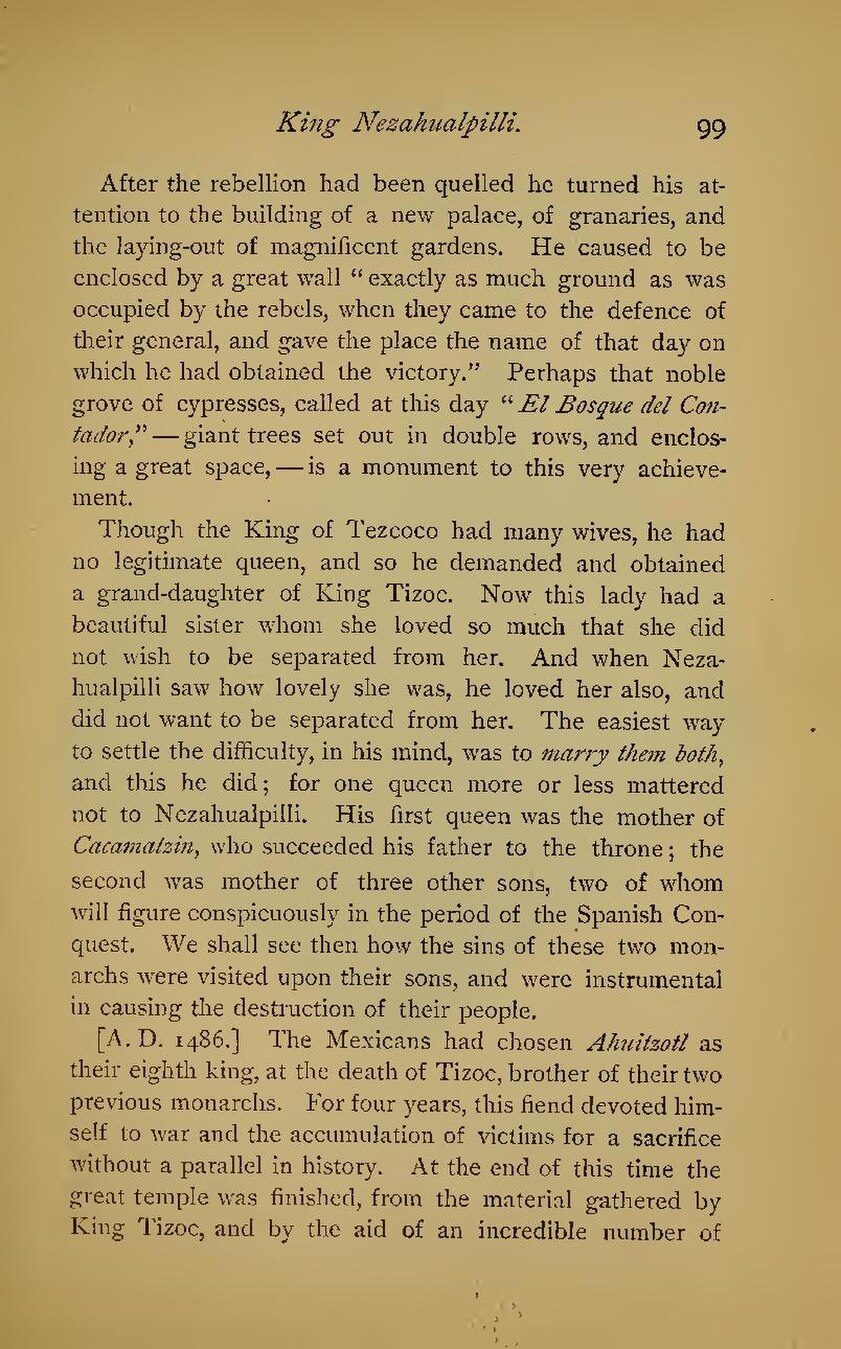After the rebellion had been quelled he turned his attention to the building of a new palace, of granaries, and the laying-out of magnificent gardens. He caused to be enclosed by a great wall "exactly as much ground as was occupied by the rebels, when they came to the defence of their general, and gave the place the name of that day on which he had obtained the victory." Perhaps that noble grove of cypresses, called at this day "El Bosque del Contador,"—giant trees set out in double rows, and enclosing a great space,—is a monument to this very achievement.
Though the King of Tezcoco had many wives, he had no legitimate queen, and so he demanded and obtained a grand-daughter of King Tizoc. Now this lady had a beautiful sister whom she loved so much that she did not wish to be separated from her. And when Nezahualpilli saw how lovely she was, he loved her also, and did not want to be separated from her. The easiest way to settle the difficulty, in his mind, was to marry them both, and this he did; for one queen more or less mattered not to Nezahualpilli. His first queen was the mother of Cacamatzin, who succeeded his father to the throne; the second was mother of three other sons, two of whom will figure conspicuously in the period of the Spanish Conquest. We shall see then how the sins of these two monarchs were visited upon their sons, and were instrumental in causing the destruction of their people. [A. D. 1486.] The Mexicans had chosen Ahuitzotl as their eighth king, at the death of Tizoc, brother of their two previous monarchs. For four years, this fiend devoted himself to war and the accumulation of victims for a sacrifice without a parallel in history. At the end of this time the great temple was finished, from the material gathered by King Tizoc, and by the aid of an incredible number of
